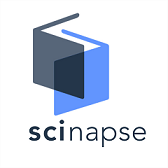Influence of Mobile Banking Services on Financial Inclusion among Selected Commercial Banks in Uasin Gishu County, Kenya
Abstract
Agency banking has become an important approach towards financial inclusion, especially in underserved and remote regions. This research examined how mobile banking services have influenced financial inclusion among selected commercial banks in the Uasin Gishu County, Kenya. Adopting the Agency Theory, the study adopted a correlational research design and was entirely quantitative. The target population was 1,219 agency banking outlets of three commercial banks in Uasin Gishu, namely KCB Bank, Equity Bank, and Cooperative Bank. Stratified and simple random sampling methods were used to select 291 agents as the sample size, based on the Krejcie and Morgan table. Data was collected using a structured questionnaire, and the response rate was 91.1%. Descriptive (including frequencies, percentages, means, and standard deviations) and inferential (linear regression and multiple regression) statistics were applied to analyse data. The results of simple linear regression indicated that mobile banking services correlated strongly with financial inclusion (r = 0.682, R² = 0.465, p < 0.001). The study concluded that effective mobile banking services play a significant role in financial inclusion. The study provides empirical evidence on how agency banking, specifically mobile banking, strategies enhance financial inclusion, offering policymakers and financial institutions evidence-based recommendations to improve accessibility, affordability, and efficiency in banking services for underserved populations.
Downloads
References
Akighir, D. T., Margaret, T., Tyagher, J. T., & Kpoghul, T. E. (2022). An Empirical analysis of the impact of agency banking on financial inclusion in Benue State, Nigeria: Implications for economic activities. International Journal of Economics and Finance, 14(2), 1-75.
Ayegbeni, D. U. (2020). Agent Banking and Financial Inclusion in Nigeria: Challenges and Prospects. International Journal of Banking and Finance Research, 6(1), pp. 32-42.
Berle, A. A., & Means, G. C. (1932). The modern corporation and private property. Macmillan.
Bizimana, M. & Mulyungi, P. (2018). Contribution of Agency Banking to the Improvement of Financial Inclusion in Commercial Banks in Rwanda: A Case of Commercial Banks in Bugesera District, Rwanda. International Journal of Management and Commerce Innovations, 6(1), 1234-1243.
Boshkoska, M. (2015). The agency problem: Measures for its overcoming. International Journal of Business and Management, 10(1), 204.
Central Bank of Kenya (2017). FinAccess Household Survey 2017. Nairobi: CBK.
Central Bank of Kenya (CBK). (2021). FinAccess Household Survey 2021. Nairobi: CBK.
Central Bank of Kenya (2024). FinAccess Household Survey 2024. Nairobi: CBK.
Cracknell, D. (2012). Policy Innovations to Improve Access to Financial Services in Developing Countries: Learning from Case Studies in Kenya. IFC Economist Intelligence Unit.
Demirgüç-Kunt, A., Klapper, L., Singer, D., Ansar, S., & Hess, J. (2018). The Global Findex Database 2017: Measuring financial inclusion and the fintech revolution. World Bank.
Gabor, D., & Brooks, S. (2017). The Digital Revolution in Financial Inclusion: International Development in the Fintech Era. New Political Economy, 22(4), 423–436.
Hair, J. F., Risher, J. J., Sarstedt, M., & Ringle, C. M. (2019). When to use and how to report the results of PLS-SEM. European business review, 31(1), 2-24.
Heng, D., Chea, S., & Heng, B. (2021). Impacts of Interest Rate Cap on Financial Inclusion in Cambodia. IMF Working Paper No. 2021/107.
Islam, A. M., Biswas, P. K., & Ghosh, R. (2019). Financial inclusion through mobile banking in Bangladesh. Development Policy Review, 37(6), 828-845.
Jack, W., & Suri, T. (2016). The long-run poverty and gender impacts of mobile money. Science, 354(6317), 1288-1292.
Jensen, M., & Meckling, W. H. (1976). Theory of the Firm. Managerial behaviour, agency costs and ownership structure, 3(4), 305-360
Kandie, P. K. (2024). Corporate Governance, Firm Age and Financial Stability of Microfinance Banks in Kenya (Doctoral dissertation, KCA University).
Kandpal, V., Chandra, D., Dalei, N.N. & Handoo, J. (2023). Key Drivers and Challenges for Financial Inclusion: Financial Inclusion in Circular Economy. Circular Economy and Sustainability. Springer, Cham. https://doi.org/10.1007/978-3-031-22723-3_2
Kithaka, J. (2021). The Role of Agency Banking in Enhancing Financial Inclusion in Kenya. Journal of Business and Finance Studies, 9(2), 45-60.
Klapper, L., Lusardi, A., & Panos, G. A. (2019). Financial literacy and the need for financial education: Evidence and implications. Swiss Journal of Economics and Statistics, 155(1), 1-8.
Krejcie, R. V., & Morgan, D. W. (1970). Sample size determination table. Educational and Psychological Measurement, 30(3), 607-610.
Lakuma, C. P., Marty, R., & Muhumuza, F. (2019). Financial inclusion and micro, small, and medium enterprises (MSMEs) growth in Uganda. Journal of Innovation and Entrepreneurship, 8(1), 15.
Maity, S., & Sahu, T. N. (2022). How far the Indian banking sectors are efficient? An empirical investigation. Asian Journal of Economics and Banking, 6(3), 413-431.
Malladi, C. M., Soni, R. K., & Srinivasan, S. (2021). Digital financial inclusion: next frontiers—challenges and opportunities. CSI Transactions on ICT, 9(2), 127-134.
Markose, S., Arun, T., & Ozili, P. (2022). Financial inclusion, at what cost? Quantification of economic viability of a supply side roll out. The European Journal of Finance, 28(1), 3-29.
Ndungu, N. (2017). Digital financial services and financial inclusion: Kenya’s success story. Brookings Institution Report.
Nisha, N., Nawrin, K. & Bushra, A. (2020). Agent Banking and Financial Inclusion. The Case of Bangladesh. The International Journal of Asian Business and Information Management, 11(1), 127–141.
Okpa, M. M. (2022). An Assessment of Cyber Crime in Commercial Banks in Calabar Metropolis. Ibom Journal of Social Issues, 11(4), 20–25.
Omar, M. A., & Inaba, K. (2020). Does Financial Inclusion Reduce Poverty and Income Inequality in Developing Countries? A Panel Data Analysis. Journal of Economic Structures, 9(1), 1-25.
Ombija, L. (2018). Cyber security challenges in agency banking in Kenya. International Journal of Financial Research, 9(3), 89-102.
Ozili, P. K. (2018). Impact of Digital Finance on Financial Inclusion and Stability. Borsa Istanbul Review, 18(4), 329–340.
Reserve Bank of India (RBI) (2020). Report on Trend and Progress of Banking in India 2020. Reserve Bank of India.
Republic of Kenya (2007). Kenya Vision 2030. Nairobi: Government Printers.
Sarma, M., & Pais, J. (2011). Financial inclusion and development. Journal of International Development, 23(5), 613-628.
Sindani, M. W., Muturi, W., & Ngumi, P. (2019). Effect of financial distribution channels evolution on financial inclusion in Kenya. International Academic Journal of Economics and Finance, 3(3), 148-173.
Suri, T., & Jack, W. (2016). The impact of mobile money on poverty. Science, 354(6317), 1288-1292.
Tiony, O. K. (2023). The Impact of Digital Financial Services on Financial Inclusion in Kenya. American Journal of Industrial and Business Management, 13(06), 593-628.
World Bank (2020). Annual Report, 2020. World Bank Group.
World Bank (2022). World Development Report 2022. World Bank.
Xinhua (2017). News Analysis: Kenyan banks Trying Hard to Adapt to Interest Rate Caps. Retrieved from https://news.xinhuanet.com/english/2017-04/24/c_136232741.htm
Zogning, F. (2017). Agency theory: A critical review. European Journal of Business and Management, 9(2), 1-8.
Copyright (c) 2025 Rose Etey, Lucy Wanza, PhD, Pamela Eng’airo, PhD

This work is licensed under a Creative Commons Attribution 4.0 International License.




























